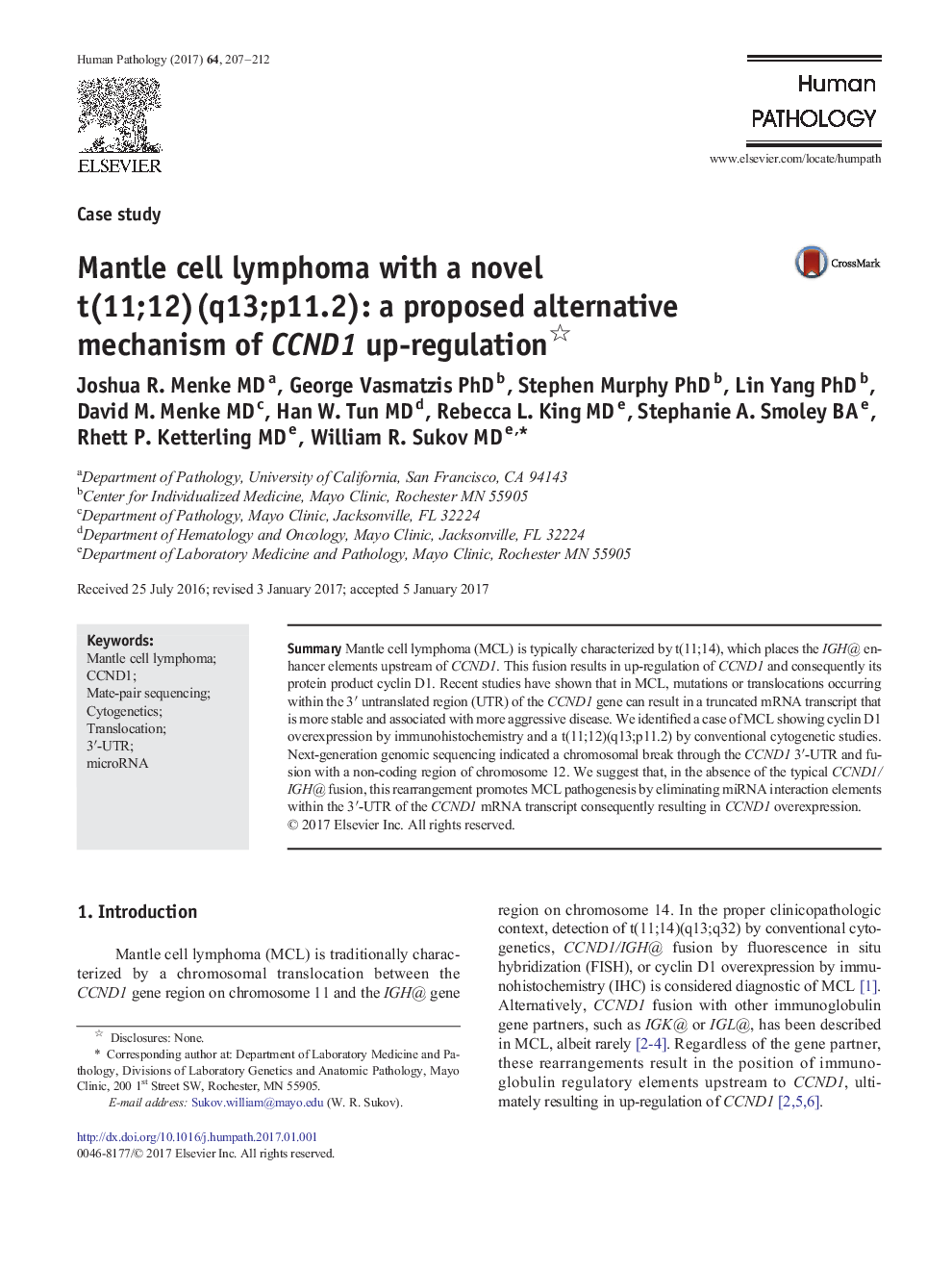| Article ID | Journal | Published Year | Pages | File Type |
|---|---|---|---|---|
| 5716218 | Human Pathology | 2017 | 6 Pages |
â¢In MCL, structural alterations that disrupt miRNA binding sites may be a mechanism of pathogenesis.â¢Mate-pair sequencing can detect and characterize structural genomic alterations.â¢Other mechanisms than juxtaposition of CCND1 and promoter elements of IGH@ can occur in mantle cell lymphoma.
SummaryMantle cell lymphoma (MCL) is typically characterized by t(11;14), which places the IGH@ enhancer elements upstream of CCND1. This fusion results in up-regulation of CCND1 and consequently its protein product cyclin D1. Recent studies have shown that in MCL, mutations or translocations occurring within the 3â² untranslated region (UTR) of the CCND1 gene can result in a truncated mRNA transcript that is more stable and associated with more aggressive disease. We identified a case of MCL showing cyclin D1 overexpression by immunohistochemistry and a t(11;12)(q13;p11.2) by conventional cytogenetic studies. Next-generation genomic sequencing indicated a chromosomal break through the CCND1 3â²-UTR and fusion with a non-coding region of chromosome 12. We suggest that, in the absence of the typical CCND1/IGH@ fusion, this rearrangement promotes MCL pathogenesis by eliminating miRNA interaction elements within the 3â²-UTR of the CCND1 mRNA transcript consequently resulting in CCND1 overexpression.
